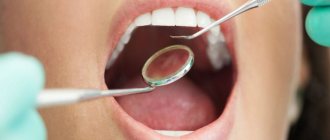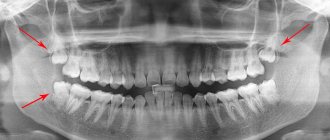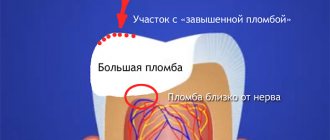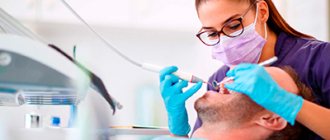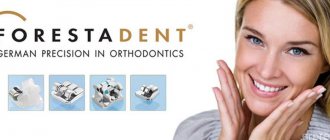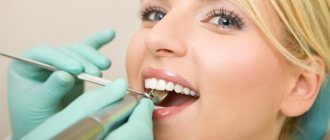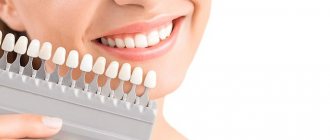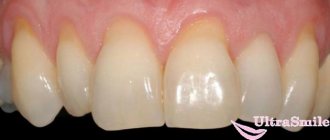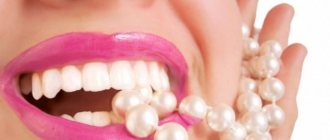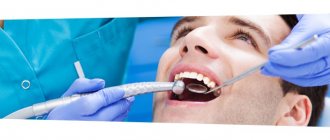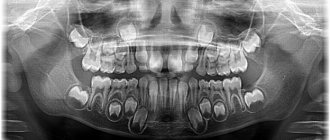Do you want to know in detail what dental caries is, how to treat it and the causes of its occurrence? This dental problem is physiological and aesthetic in nature. Damage and gradual destruction of tooth enamel can cause a person a lot of unpleasant experiences. To prevent the disease from progressing, it is necessary to treat it in a timely manner. Are you interested in the question of when to treat caries? Depending on the stage of the disease and the speed of its progression, you have a varying amount of time at your disposal. At any of its stages, it is best to seek medical help as quickly as possible in order to avoid much more serious consequences for your health.
Will floss prevent dental caries?
A recent New York Times article[] questioned the benefits of dental floss.
A 2011 study[] found that flossing in addition to brushing reduces the risk of gum disease. And not too much, since most people don’t floss their teeth thoroughly enough.
But in the fight against enamel destruction, thread is not a help at all. There is still no evidence that regular flossing reduces the risk of tooth decay.
Children and pregnant women: features of their treatment
Methods of dealing with dental problems in a child depend on his age. When looking for an answer to the question of how caries of baby teeth is treated, you need to take into account the degree of neglect of the disease. Delivering a lot of unpleasant experiences to a small patient, it affects the growth and development of permanent (molar) teeth. To prevent them from being damaged during teething, you should not turn a blind eye to the existing carious cavities in your child’s mouth. How to treat bottle caries is decided directly by the dentist himself, in consultation with the baby’s parents.
Many expectant mothers are concerned about the question of whether caries can be treated during pregnancy. The likely consequences and negative effects of painkillers on the developing fetus frighten most pregnant women. Exposure to an even greater risk of developing this disease, young mothers should treat their health with increased attention. Beginning damage to tooth enamel should be stopped immediately to prevent possible complications in the form of pulpitis or the development of a cyst.
Do I need a dental scan?
American dentists recommend having your teeth x-rayed every year. Austin Frakt, a health economist, reviewed[] medical studies and concluded that such reinsurance is unwarranted. Cavities in the tooth form more slowly—over 2–3 years.
In Russia, preventive x-rays are not so popular. But computed tomography is suggested to be done regularly. You should also not agree to this expensive service more often than once every couple of years.
First symptoms of the disease
Microorganisms that attack tooth enamel gradually destroy its structure.
A small damage gradually grows, turning into a large carious cavity. In the absence of timely treatment, the tooth tissue is destroyed, which can lead to its complete loss. To understand how to remove caries from teeth while maintaining their integrity, you should first become familiar with its symptoms. To independently determine the onset of the pathological process, you need to pay attention to the appearance of the teeth, increased sensitivity or any other unpleasant sensations.
Symptoms of caries include a change in the color of the enamel - its darkening, the appearance of stripes and furrows, spots and hard chalky formations. In addition, the development of this dental problem is indicated by sensitivity to sweets, cold and hot. Painful sensations during meals or for no reason at all, the appearance of bad breath - all this can also confirm the initial or more complex stage of caries.
Which toothpaste is more effective?
The good news is that brushing your teeth is still beneficial. But to prevent the development of caries, the paste must contain fluoride. A study of the results of dental examinations of children aged 5 to 16 years []confirmed the effectiveness of the use of this mineral for the prevention of caries and tooth loss. Moreover, it is better to brush your teeth with fluoride paste twice, not once: the positive effect will be more noticeable.
True, fluoride paste does not help against gingivitis and plaque on teeth. But it really protects against enamel destruction.
Air abrasive processing
The air-abrasive method involves mechanical treatment of carious lesions using special sandblasting machines, which are also used for professional oral hygiene. The idea of “knocking out” superficial caries with a stream of air containing impurities arose in the 40s in the USA. Then quartz sand was used as an abrasive (an impurity with high hardness), and later - aluminum oxide, a colorless and non-toxic substance. Flow-abrasive systems “shoot” with enough power to remove softened, caries-affected tissues without harming healthy ones. In the case of using air-abrasive treatment, the possibility of developing secondary caries is practically eliminated. The procedure is safe, painless, and does not require anesthesia when treating initial caries.
As with other methods of treating caries without a drill, the air-abrasive method does not heat the dental tissues and does not create noise or vibration. Moreover, it reduces the risk of microcracks forming, which can later cause destruction of the entire tooth. “Knocking out” with an air stream with abrasives occurs pulsed, for 5–10 seconds, which is more effective than dissection with a drill. The air-abrasive treatment method is not ideal, because in some cases it may still be necessary to clean out the caries with a drill and place only a composite filling. Sometimes this method of dental treatment is not applicable at all due to the inaccessibility of the installation tip to the affected area. Another disadvantage is the possible increase in tooth sensitivity in the future.
Which toothbrush is better
Electric toothbrushes are many times more expensive than regular ones. But it does seem to make sense in terms of plaque and gingivitis control.
Researchers compared the teeth of adults and children who used electric and regular toothbrushes. Within a month, it turned out that among representatives of the first group, plaque formation decreased by 11%, and after three months - by 21%. After a month of using electric toothbrushes, the incidence of gingivitis decreased by 6%, and after 3 months - by 11%.
Models with a rotating head cope best with plaque.
Is professional teeth cleaning necessary?
Some dentists recommend polishing and grinding your teeth, or professional cleaning, twice a year. However, this procedure has a number of contraindications: allergic reactions to the medications used, enamel sensitivity, bleeding gums.
In 2005, eight studies[] were conducted on the effects of professional dental cleanings on dental health. None of them even confirmed the safety of this procedure, let alone the need to do it regularly.
Contraindications to the procedure
Like any medical procedure, professional dental hygiene has contraindications:
- age under 18 years;
- inflammatory diseases of the oral cavity;
- foci of caries;
- bronchial hyperreactivity (in patients with asthma, allergies, obstructive bronchitis);
- severe thinning of the enamel layer;
- bruxism;
- some mental pathologies;
- chronic diseases in the acute phase;
- infectious pathologies;
- a large number of filled teeth;
- epilepsy; open form of tuberculosis;
- wearing braces and metal crowns.
Most contraindications are relative. The patient can undergo the procedure after recovery.
Why do you need interdental brushes?
In 2015, a review of seven studies was published in which 354 patients brushed their teeth in three ways:
- only with a brush;
- brush and floss;
- brush and brushes.
Only once did scientists note that additional cleaning with a brush had advantages over brushing. But the evidence cannot be considered rigorous, since we are talking about a superficial study: the effect has not been analyzed in the long term. The same goes for comparing brushes and dental floss.
There is not enough data yet to draw conclusions about the benefits of brushes for interdental spaces.
How often should you visit the dentist?
In 2013, scientists analyzed[] data from medical examinations of 36,000 children. With regular preventive examinations, the likelihood of subsequent requests for treatment was indeed lower. But preventive examinations are economically justified no more than once a year.
Further research showed[] that it was not preventive examinations as such that had a positive effect, but the use of dental sealants. Dental sealants are coatings that are applied to the chewing surfaces of teeth to protect them. This procedure is most effective for children when the teeth are not yet damaged.
But sealants, when applied correctly, last from three to five years. Therefore, in this case, you can get by with fewer visits to the dentist.
Classification of dental disease
Depending on the depth of the lesion, there are the following types of disease:
- Spot. At this stage, a light or dark spot appears on the surface of the enamel, while its structure remains unchanged. It occurs due to demineralization of the enamel. During this period, treatment is the simplest, fastest and most painless.
- Surface. To understand how initial superficial caries in adults is treated, you need to understand its essence. At this stage, destruction occurs within the enamel layer and does not affect the dentin. The patient may experience pain when eating cold, hot and sweet foods. To combat the disease, the stain is polished, after which the tooth is remineralized.
- Average. This type of disease affects the surface layer of dentin. A person may experience constant aching or intermittent pain. Do you want to know how to treat average caries in the video? To heal, the damaged part of the tooth is removed and a filling is installed in its place.
- Deep. In this case, tissue damage is most severe. Interested in the question of how to treat deep advanced caries? To successfully get rid of such a complex disease, you need to completely remove the damaged area of the tooth by installing a filling. Untimely treatment can lead to serious complications associated with pulp inflammation.
To see how dental caries is treated and photos of the stages of the disease, it is enough to study the principles that modern dental clinics follow. The algorithm and complexity of the procedures performed depend on how advanced the problem you have is.
According to Black's classification, there are the following types of caries:
- Fissure. Do you doubt whether fissure caries should be treated? This type of disease is characterized by the occurrence of damage that occurs in the fissures - the natural recesses of the tooth. Timely consultation with a doctor will help prevent the further development of this pathological process.
- Approximal. The disease affects the contact surfaces of the canines, incisors and molars.
If you want to know how to treat decay on your front teeth while maintaining their integrity and attractiveness, seek help from an experienced dentist.
- Cervical. The process affects the base of the teeth near the gums. Would you like to know how root and cervical caries on the front teeth are treated? An experienced dentist decides how to treat caries near the gums. To restore the original functions of the cervix and its aesthetic appearance, the help of a professional doctor is necessary.
